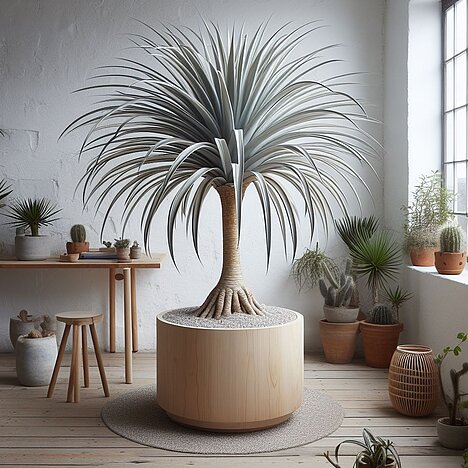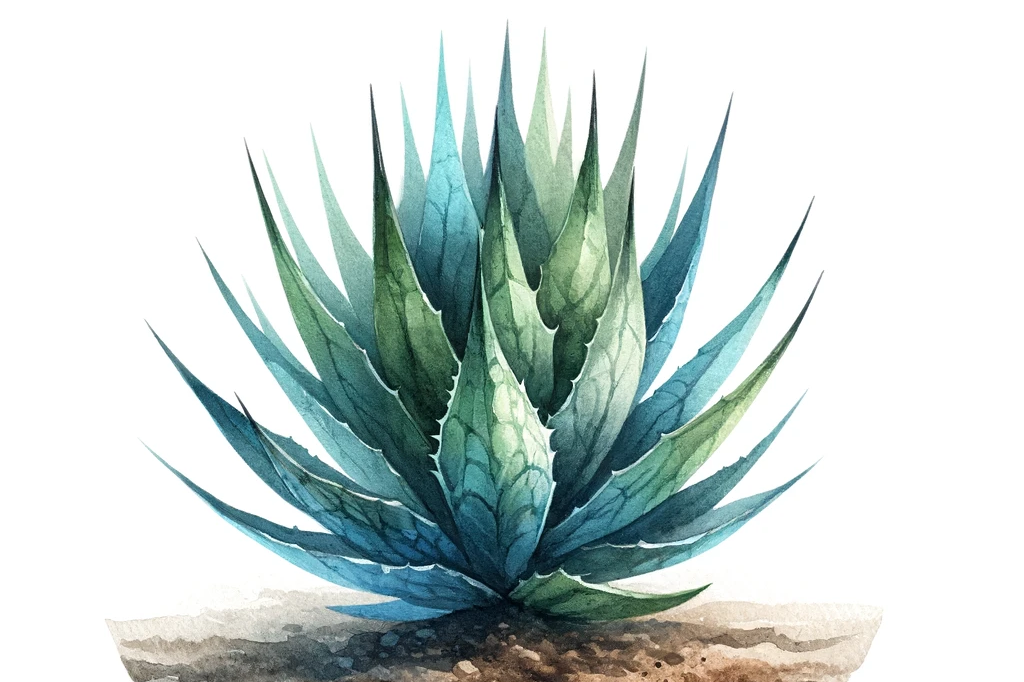Elephant foot

Do you like plants and dogs? Then you may have already thought about getting an elephant's foot. This plant is also known as the bacon tree or jade tree and belongs to the succulent family. It originates from South Africa and can grow up to three meters high. Its thick, fleshy leaves are reminiscent of an elephant's ears, hence the name. But is an elephant's foot also suitable for your dog? This article will tell you everything you need to know about this plant.
What is an elephant foot?
An elephant's foot is an easy-care houseplant that needs little water and tolerates plenty of sun. It grows slowly and forms a thick stem that serves as a water reservoir. The leaves are green or reddish and often have small white dots. Some varieties bloom in winter with small pink or white flowers. An elephant's foot can grow very old and is considered a symbol of luck and wealth in some cultures.
What are the benefits of an elephant's foot for my dog?
An elephant's foot can have several benefits for your dog. Firstly, it improves the air quality in your home by absorbing carbon dioxide and releasing oxygen. Secondly, it can serve as a playmate for your dog when you're not around. Many dogs find it exciting to nibble on the leaves or explore the trunk. An elephant's foot can also help your dog to relax if he is suffering from stress or anxiety. The green color has a calming effect on the nervous system and the plant radiates positive energy.
What are the disadvantages of elephant's foot for your dog?
However, elephant's foot also has some disadvantages for your dog that you should be aware of. For one thing, it is slightly toxic to dogs if they eat too much of it. Symptoms can include vomiting, diarrhea or lethargy. Secondly, it can cause injuries if your dog cuts itself on the sharp leaf edges or knocks over the trunk. The elephant's foot can also cause allergies if your dog is sensitive to the plant.
How do I look after an elephant's foot properly?
If you choose an elephant's foot, you should look after it properly so that it stays healthy for a long time and doesn't harm your dog. Here are some tips:
- Choose a bright location for your elephant's foot, but avoid direct sunlight in summer.
- Water sparingly and allow the soil to dry out well between waterings.
- Fertilize only in spring and summer with a special succulent fertilizer.
- Prune regularly to maintain the shape and stimulate growth.
- Repot them every two to three years in a larger pot with fresh soil.
How do I protect my dog from an elephant's foot?
If you have an elephant foot in your home, you should take some measures to protect your dog from it. Here are some suggestions:
- Place the elephant foot out of your dog's reach, such as on a shelf or dresser.
- Surround the elephant's foot with other plants that are non-toxic to dogs, such as green lilies or Cyprus grass.
- Train your dog not to nibble or push the elephant's foot.
An elephant's foot is an easy-care houseplant with a thick stem and green or reddish leaves. It can improve air quality and serve as a playmate or soothing for dogs. However, it is slightly poisonous, can cause injuries and trigger allergies. Proper care includes a bright location, sparing watering and occasional pruning. To protect the dog, the plant should be placed out of his reach and surrounded by non-toxic plants. Training the dog not to nibble the plant is also important.
If you notice any signs of hypersensitivity or poisoning in your dog, you should see your vet immediately. We are not a substitute for a vet, but we try to be as accurate as possible. Every dog reacts differently and we recommend you get a second opinion or consult your vet if in doubt.
Stay healthy and take good care of your four-legged friend!😊
Similar to Elephant foot
Palm lilies (yucca) are a genus of plants from the asparagus family. They originate from the arid regions of America and are adapted to life in the desert. There are over 40 species of palm lilies,...
Dragon tree contains saponins, secondary plant substances that are found in many plants. Saponins have a soap-like effect and foam up when they come into contact with water. They protect the plant...
Agave is a genus of succulents consisting of more than 200 species. Most agaves originate from Mexico and the southwest of the USA, where they grow in dry and hot areas. Agaves have thick and fleshy...
Cacti are members of the Cactaceae family, a very diverse group that comes in a variety of shapes and sizes. They are particularly known for their ability to survive in extremely dry and harsh...



